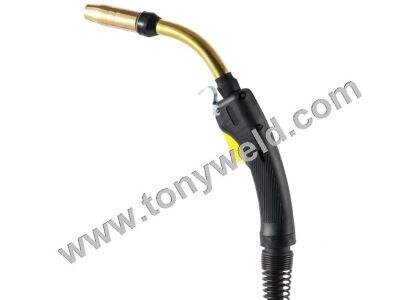Avez-vous déjà regardé quelqu'un faire de la soudure ? Lorsque vous le voyez se produire, cela ressemble à de la magie ! La soudure est un processus unique, ce qui signifie qu'il s'agit d'un processus spécial où une personne utilise un outil pour joindre deux morceaux de métal qu'elle fait fondre ensemble afin qu'ils collent. C'est comme fusionner deux morceaux de métal en un seul bloc. Il existe plusieurs types d'outils de soudure, chaque type étant utilisé pour un travail spécifique. Donc, aujourd'hui, nous allons discuter de trois types différents de soudure — au gaz, TIG et MIG. Ces outils individuels ont leurs propres mécanismes spéciaux. Alors, lequel devriez-vous utiliser pour votre projet ? Queso, je suppose, bien ensemble avec notre ami Tonyweld !
Le premier choix lorsque vous avez besoin d'un travail précis
Tout d'abord, la soudure au gaz, qui est la méthode traditionnelle pour faire des travaux détaillés. La soudure au gaz a été très utile lorsque vous devez être extrêmement prudent et correct dans votre travail. Par exemple, une petite fissure dans le moteur d'une voiture que vous voulez réparer. Pour ce travail, vous seriez en train de le souder avec du gaz. matériel de soudage parce que vous pouvez contrôler la chaleur et obtenir le bon résultat de soudage.
L'utilisation de la soudure au gaz nécessite concentration et stabilité, car vous souhaitez vous assurer que les pièces métalliques s'assemblent avec précision. Vous devez pratiquer et perfectionner cette technique afin de réaliser des soudures fortes et propres.
Soudures Exclusivement Propres : Le Choix des Professionnels
La soudure TIG vient ensuite, qui, grâce à sa capacité à créer des soudures précises, est le choix de nombreux professionnels. TIG - Tungsten Inert Gas - Qu'est-ce que c'est ? Cet outil de soudure utilise un électrode en tungstène qui génère un arc électrique. Cet arc fusionne très bien les morceaux de métal ensemble. La soudure TIG est excellente pour les projets et applications où il est nécessaire d'obtenir une soudure forte et exceptionnellement propre qui a aussi bonne apparence.
Des exemples de situations incluent la création d'une rampe en acier inoxydable, pour votre maison ou un lieu public, le soudage TIG conviendrait. Car il aide à créer des joints solides qui peuvent durer plus longtemps que beaucoup d'autres. Votre outil le plus important dans ces circonstances est une main ferme et beaucoup de contrôle. Le soudage TIG est un favori de nombreux professionnels car il leur permet de assembler leurs œuvres très élégamment.
La Solution Rapide et Simple pour les Grands Projets
Enfin, nous avons le soudage MIG, le choix rapide et facile pour les grands projets. MIG signifie gaz inert métal. Cet outil diffère en utilisant un fil, qui est alimenté par la machine et fait fondre le métal au passage. Le soudage MIG est excellent pour les projets où vous devez effectuer de nombreux soudures rapidement et efficacement.
Note : Si vous travaillez sur une grande clôture métallique ou une grande structure, vous bénéficierez de l'utilisation du MIG. torch de soudage cela permet de travailler rapidement avec moins de temps sur le chantier. Cela signifie que vous pouvez aborder des projets plus importants sans passer trop de temps sur chaque soudure. C'est pourquoi les soudeurs MIG sont populaires auprès de nombreux soudeurs, car ils économisent du temps et des efforts.
Facteurs à considérer pour vos projets de soudage
Bien que vous veniez juste d'apprendre trois types d'outils de soudage, vous pourriez déjà être incertain quant à celui à utiliser pour votre projet. Voici quelques points clés à prendre en compte :
Type de métal : Les divers outils de soudage fonctionnent mieux avec certains types de métaux. Certains outils conviennent mieux aux métaux fins et d'autres aux métaux épais. Assurez-vous de choisir un outil adapté au type de métal que vous utilisez pour terminer votre projet.
Épaisseur du métal : Certains projets de soudage nécessitent également des métaux plus épais, ce qui exige une soudure plus solide. Assurez-vous de sélectionner un instrument adapté à l'épaisseur du métal que vous utilisez. Si le métal est très épais, vous aurez besoin d'un outil spécial pour garantir que le travail souhaité soit bien effectué.
Niveau de compétence requis : Les différents types de soudage nécessitent des niveaux de compétence et de pratique variés. Certains procédés de soudage sont plus faciles pour les débutants, tandis que d'autres sont plus avancés. Utilisez un outil que vous maîtrisez déjà afin de travailler avec assurance.
Comment souder avec succès avec des outils à gaz, TIG et MIG
Quel que soit l'outil de soudage que vous choisissez, voici quelques conseils pour garantir votre kits de soudage entreprise est couronnée de succès :
La règle d'or du soudage : Pratique, pratique, pratique - Comme toute compétence, on s'améliore en pratiquant. Alors commencez petit avec des projets plus simples, puis passez aux projets plus complexes. Cela vous permet de renforcer votre confiance et vos compétences petit à petit.
Gardez votre espace de travail bien rangé : Avant de commencer votre soudure, il est crucial de s'assurer que votre espace de travail est propre et exempt de tout débris inflammable. Avoir une zone propre sera sécuritaire pour votre travail et évitera les accidents.
Portez un équipement de sécurité : le soudage est un travail dangereux, donc porter un équipement de sécurité est essentiel. Cela signifie des gants pour protéger vos mains, un casque pour protéger votre visage et vos yeux de la lumière intense, et une veste ignifugée pour éviter que les étincelles ne vous blessent. Il est donc vraiment important d'avoir l'équipement approprié pour continuer à travailler en toute sécurité.
En peu de temps, vous souderez comme un professionnel avec ces conseils et un outil de soudage de Tonyweld. N'oubliez pas de vous amuser en apprenant !

 EN
EN







































